Алтарь мага плетения mana and artifice
Обновлено: 26.07.2024
Mana and Artifice is a mod created by Ars Magica 2. The mod is focused around the creation of customizable spells, performing of complex rituals, and forging of magical equipment.
Содержание
Rituals
Rituals are a way to establish more powerful effects at the cost of requiring a lot of setup and preparation. For example, one can create portals that allow travel over long distances, control time and the weather, travel to or summon other players, or make powerful alliances.
Enchanting
Mana and Artifice allows players to select their own enchantments by using an arcane forging system.
Manaweaving
The Manaweaving mechanic allows players to use a special wand to perform actions like summoning a grimoire or add magic into rituals. It can be substituted with a block that can draw the patterns instead.
Factions
The mod uses a faction system that allows players to ally themselves with wizards, fey, or demons. Each faction has powerful benefits and drawbacks.
Occulus
The Occulus is in-game documentation that is acquired early in the mod. It tells players what is needed to progress and what can be crafted at their progression level. Progress advances by tiers.
Arcane Codex
The Codex Arcana is in-game documentation that synchronizes with the player's current tier to show more information about what they can craft or perform.
With Mana and Artifice, you have much more control over all of the aspects of your spells.
The familiar Shapes, Components, and Modifiers return, but with more of a focus on balance and stability.
Initially you are limited to one shape, one component, and three modifiers. As you progress you'll unlock the ability to create many more combinations and effects! Your imagination is the limit.


Rituals are a way to establish the much more powerful effects. They require a great deal of setup and preparation, but can cause some truly amazing things to happen!
Create portals allowing travel over long distances, controlling time and the weather, travelling to or summoning other players
Enchanting is now an involved but fun process with a great reward: you can choose which enchantment you get!
Go from firing clay plates to smelting things in an arcane furnace, hammering out the rune on a mystical anvil and infusing your own mana into it (along with a few required reagents) - the process truly feels magical and powerful.


With the new Manaweaving mechanic, an array of powerful magical effects are right at your fingertips!
Using a special wand, you channel your own mana into drawn shapes right in the air in front of you, weaving together complex effects like summoning a grimoire (an ender-chest-like spellbook) or as a way to add magic into rituals.
As an accessibility option, or for those who simply don't care for the mechanic, there is also a block that can draw the patterns for you. Play how you want to play!
Through a faction system, ally yourself with the ancient wizards of old, the courts of the fey, the demons of the nether, or even the undead!
Each faction has powerful benefits and drawbacks, making each playthrough feel unique and fresh.


Early on in the mod, you gain access to a useful block called the Occulus. It tells you what you need to do to progress, as well as what you can craft at your current progression, all grouped by category.
Instead of having to research every single thing in the mod, you instead progress through tiers. These have logical requirements and tie in with natural progression through the game, so you progress just by playing!
The Codex Arcana is a tool that synchronizes with your current tier to show you more information about what you can craft without feeling overwhelming. If the Occulus is *what* you can craft, the Codex is *how*.
Conveniently laid out pages and recipes show you exactly what you need to do and how to do it.

Each construct is composed of five pieces: head, torso, legs, left arm, right arm. Each of those pieces gives it various capabilities, things like carrying items, attacking, water breathing, etc.
Each piece can be made from any one of six materials: Wood, Stone, Iron, Gold, Diamond, or Obsidian. You can mix and match too! The material composition changes things like the construct's overall movement speed, fire resistance, whether or not it can float, and more.

Lastly, when you finally craft your construct, you infuse each of the 8 crystals surrounding your workbench with an affinity. You do this by casting spells at them. The overall affinity can also change properties like giving physical resistance for earth affinity, move speed for air, and more. The Codex goes into detail on all of it so you don't need to spend time guessing. It also looks and feels very magical.

Between part types, materials, and affinity, there is a ton of possibility for creating the perfect construct for your situation! And, you can modify them at any time by commanding them to return to a workbench!
Once you have constructs, you can command them using a control rod for basic things (follow me, return to workbench, stay). If you want something more advanced, you can use a Lodestar block to create kind of a job board for them to follow. Assigning one or more constructs to a Lodestar will cause them to start executing the tasks, one at a time. The only limit is your creativity and imagination!
The Mana and Artifice API allows mod makers to interface with the mod in several ways, from creating new shapes/components/modifiers to new rituals, to interfacing with the player's mana capabilities and more.
- Install Forge and get your IDE set up with a basic mod.
- At the root of your project, create a folder called "libs"
- Put the Mana and Artifice main jar as well as the API jar in that folder
- Add the following to your build.gradle:
Adding a ritual is comprised of 3 main pieces: the ritual recipe JSON file, the ritual effect handler, and your ritual registration class. We'll go over all three of them here.
The JSON file describes many things about the ritual, including where the runes need to go, what reagents are required, and what the beam/light pattern looks like. It's comprised of many different sections. Let's take a look at an example and break it down piece by piece.
First, we have the type. It tells the recipe parser that this is a ritual recipe.
Next, we have the tier. This ties directly into M&A's progression system, and indicates where in progression a player should be in order to be able to perform this ritual.
After that is pattern. The pattern dictates where runes need to go, as well as the size of the ritual. Your pattern array must be an odd size! This is because the ritual needs a center point. In the pattern, a value less than zero indiciates that a rune must be placed there, but there is no index assigned to that position. More on that later. A value of zero indicates that there is no rune at that position. A value greater than zero indicates a rune as well as an index value. This is for when the order of reagents matters, such as with the Ritual of Return.
Next is displayPattern. This controls how the light points and beam will display. It must be the same size as pattern, and must require points/indices at the same offset. It works in much the same way as pattern does. A value less than zero means that there is a rune there but no point of light. A value of zero means that there is no rune there. A value greater than zero means that there is a point of light at that spot. Points will show up in the order defined, and the beam will connect points in order. You can create a gap in the beam simply by skipping a number in order, for example (1-2-3) (6-7-8) will draw two separate beams. This is referred to as beam grouping.
Following that is reagents. This also must be the same size as pattern. A space indicates no reagent, and a letter indicates a reagent. The key here is that wherever you put a letter, the matching point in pattern must be non-zero! This makes sense as you can't have a reagent where there is no rune.
Keys works closely with reagents. Every letter in reagents must have an associated key. The item field can be an item id or a tag id. Optional will allow the ritual to start if that item is not present (you will need to handle how this changes the effect in your ritual handler). Default false. Consume if false will return the item to the player when the ritual is complete instead of consuming it. Default true.
Manaweave is an array of patterns needed, in order, to complete the ritual. It can be omitted entirely if manaweaving isn't required for your ritual.
Lastly, parameters are a set of miscellaneous configuration options that control various display properties.
InnerColor and OuterColor control the inner and outer colors of the light points, respectively. They are in RGB format: 0x(red)(green)(blue).
DisplayIndexes controls whether non-zero indices are rendered (like on the ritual of return). This should be set to true when order matters.
connectBeam will loop the beam back to the original point on every beam group, so you can have closed shapes in the pattern drawn.
beamColor will set the beam's color.
All items in the parameters block are optional.
One extremely important thing: When your pattern is drawn in game, it will be flipped on the horizontal axis! This doesn't matter if it's symmetrical, but keep that in mind.
After defining your recipe, you need to define your handler. This controls what effects occur when your ritual is performed. Mana and Artifice core will handle the pattern matching, reagent collection, and the actual ritual itself, and your handler will simply be called when the ritual is completed.
Below is a commented example of a ritual effect.
//need to extend RitualEffect, a base class from the API public class RitualEffectMonsoon extends RitualEffect < //default constructor takes in the ID of the ritual recipe this handles public RitualEffectMonsoon(ResourceLocation ritualName) < super(ritualName); >//actually applies the effect. This will be called when the player completes the ritual. @Override protected boolean applyRitualEffect(PlayerEntity ritualCaster, ServerWorld world, BlockPos ritualCenter, RitualRecipe completedRecipe, NonNullList reagents) < boolean thunder = false; //here we are handling processing the reagents. We remove any air and water focus items, leaving only the //ones we want to handle reagents.removeIf(p ->p.getItem() == Items.AIR || p.getItem() == ItemInit.ENCHANTMENT_FOCUS_WATER.get()); //look through the remaining reagents and set a flag if they match what we need them to if (reagents.size() == 5) < boolean allGrayWool = true; for (ItemStack stack : reagents) < if (stack.getItem() != Items.GRAY_WOOL) < allGrayWool = false; break; >> thunder = allGrayWool; > //apply the actual effect taking into account our flags if (thunder) < world.func_241113_a_(0, 6000, true, true); >else < world.func_241113_a_(0, 6000, true, false); >//return true to indicate that the ritual was completed successfully return true; > //this method will keep the runes, lights, beams, and particles around for the number of ticks specified. //Useful if you're using an entity as a timed effect. //You cannot return less than 1 from this. If you do, it will default to 60. @Override protected int getApplicationTicks(ServerWorld world, BlockPos ritualCenter, IRitualRecipe completedrecipe, NonNullList reagents) < return 10; >>
Now that you have everything defined, you need to register your handler. To do this, you use the Minecraft Forge event bus, and subscribe to the RegistryEvent of type RitualEffect.
Doing so matches your ritual handler to its recipe. You can have multiple handlers per recipe if you register them that way. Each one will be called when the ritual is completed.
An example is below.
The first ResourceLocation is matching the recipe. By default it will look in data/your_mod_id/recipes. If you have subfolders in there to organize your recipes, you will need to specify them here.
The second ResourceLocation is the registered ID for your ritual handler.
Manaweaving is a mechanic added byMana and Artifice. It allows players to draw "Manaweave Patterns" into the air using Wands. It is primarily used for crafting at the Manaweaving Altar and finishing Rituals. To draw a Manaweaving Pattern, hold down the right mouse button while wielding the Wand. The pattern can be seen as a white sparkle trail. Release the right mouse button after drawing the pattern; if it is successfully drawn, a purple dotted outline will appear in the air where it was drawn. The patterns can be a bit particular so it may take more than one attempt to draw the pattern. Most Rituals require manaweave patterns to finish them and will display the Manaweave Patterns that need to be completed as a purple dotted outline. Most rituals require more than one pattern and will only display one at a time.
The Manaweaving Altar requires Manaweaving Patterns to finish crafting. Unlike Rituals, the Manaweaving Altar does not display what pattern is needed. The Manaweaving Altar can require up to 6 patterns, and they must be drawn in the correct order. Required patterns can be found in the Codex Arcana in the respective recipes. Patterns can be combined by drawing multiple different patterns. Combined patterns can be used to summon a Grimoire .
Codex Arcana entry
What is Manaweaving Manaweaving is the process of infusing your own magic into your creations. Spells, rituals, runes, and more can make use of it. To do it, first craft a Manaweaver's Wand. Next, hold the wand in your hand and begin using it (hold the right mouse button). Then, draw the shape in the air. Stop using the wand when you're done. The concentration required will consume your mana quickly. Do not let this rush you, however, lest you make mistakes: an incorrect pattern will do nothing. Some mages have claimed to have heard chimes while using the manaweaver wand. While not confirmed, such an occurrence would be an indication that the wand is working. There are also those that are either unable or unwilling to draw the shapes in the air. To that end, the manaweave projector was developed. Simply place it on the ground and it will draw in your mana (or that of others nearby) to power itself. When activated, it will project the pattern it is set to after a few seconds.
![Mana and Artifice - наследник арс маджика 2, глобальный магический мод [1.18.1] [1.16.5]](https://ru-minecraft.ru/uploads/posts/2021-10/medium/1635429519_mana-and-artifice.jpg)
Мод Mana and Artifice - это крупный, глобальный магический мод, который является неким наследником Ars Magica 2. Мод добавляет в игру огромное количество магических предметов и возможностей, систему уровней, фракции, ритуалы, возможности быстро перемещаться и контролировать время и другие природные стихии.
На данный момент мод почти полностью переведен на русский язык, он имеет подробную книгу гайд в которой можно найти всю необходимую информацию и все рецепты и способы проведения ритуалов. Что бы получить книгу, вы должны купить её у специального жителя, в обмен на виктуум, который сможете создать из руды.
В моде есть 3 вида фракций, игрок может примкнуть к одной из них, а с двумя другими враждовать, среди фракций есть демоны ада, дворы фей и древний совет магов, для вступления вам придется осуществить некий ритуал, он станет доступен на 2 ранге. После вступления в фракцию, другие фракции могут подсылать к вам убийц. Фракции различаются магией и предметами которые можно получить, демоны специализируются на мощных атаках огнем, дворы фей на уловках и хитростях, а совет магов на защите и мане.
Мод добавляет множество интересных механик игры, чертите и проводите ритуалы, создавайте и используйте заклинания, создайте и используйте магические предметы, создайте личных големов, они смогут защищать вас, либо выполнять рутинную деятельность, например добывать ресурсы.
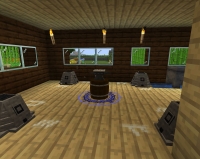
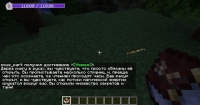
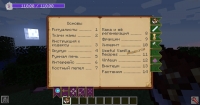
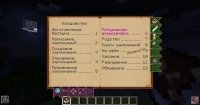
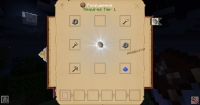
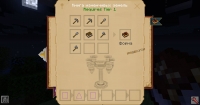
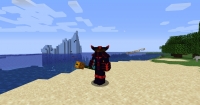
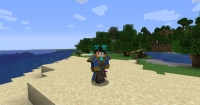
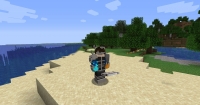
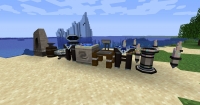
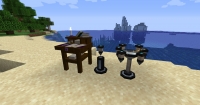
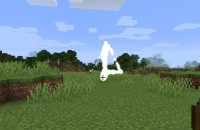
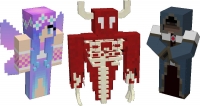
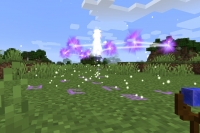
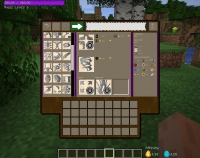
Читайте также:

